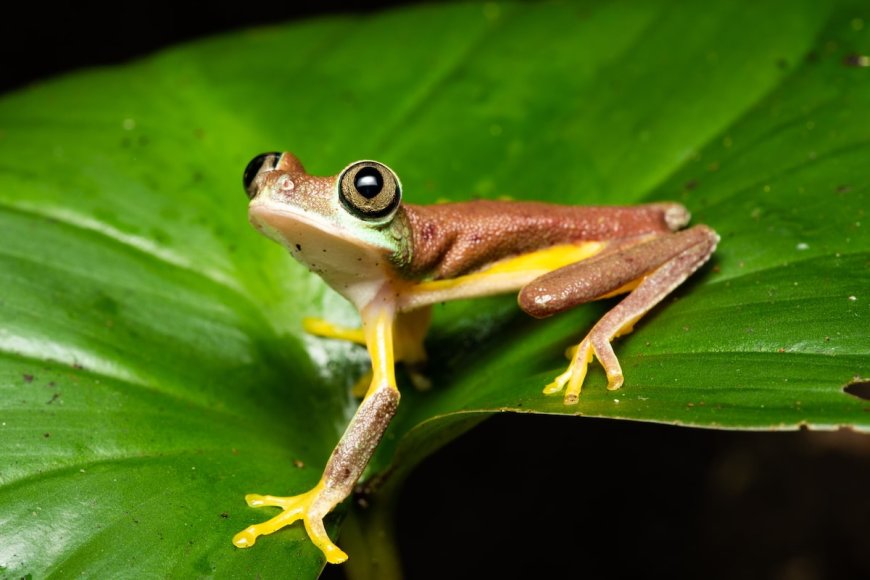Global Warming Has Already Made Natural Habitats Unsurvivable for 2% of Amphibians: Study
In a new study, researchers determined that 2%, or 104 amphibian species out of 5,203 species studied, are already experiencing overheating events in their natural habitats. The researchers considered different microhabitats of amphibians, including terrestrial, arboreal and aquatic and compared heat tolerance limits of the animals to the actual daily temperature patterns from the past […] The post Global Warming Has Already Made Natural Habitats Unsurvivable for 2% of Amphibians: Study appeared first on EcoWatch.

In a new study, researchers determined that 2%, or 104 amphibian species out of 5,203 species studied, are already experiencing overheating events in their natural habitats.
The researchers considered different microhabitats of amphibians, including terrestrial, arboreal and aquatic and compared heat tolerance limits of the animals to the actual daily temperature patterns from the past decade. From there, the researchers considered temperatures under the current global warming conditions along with a 2-degree Celsius warming scenario and a 4-degree Celsius warming scenario.
According to the study, which was published in the journal Nature, 2% of amphibians are already being pushed past their physiological limits. In the 4-degree Celsius scenario, 7.5% of amphibians would no longer be able to survive the overheating events in their natural habitats.
As New Scientist reported, global warming is currently expected to reach between 1.9 to 3.7 degrees Celsius by 2100, with a slight chance of up to 4.4 degrees Celsius warming.
“Impacts escalate under different climate warming scenarios. There is an increase in impact between the current climate and +2C of warming; but impacts increase disproportionally under +4C of warming,” Patrice Pottier, lead author of the study and a postdoctoral researcher at University of New South Wales, said in a statement. “This step-change impact severity shows that going above +2C of global warming can be a tipping point where we may see a lot of local extinctions.”
Terrestrial amphibians faced the greatest threats, while those living in aquatic areas or higher up in trees were able to remain cooler. While amphibians in the Southern Hemisphere had increasing vulnerability to heat stress the closer their habitats were to the equator, the researchers found that amphibians living farther from the equator in the Northern Hemisphere faced more threats of overheating.
With loss of amphibians, entire ecosystems will be disrupted, as many other animals feed on these species and amphibians also help control disease-transmitting organisms, such as mosquitos, Mongabay News reported.
Currently, around 41% of all amphibians, totaling over 8,000 species, are listed as threatened with extinction, according to a report from the International Union for Conservation of Nature. Habitat loss and disease are the biggest threats, but climate change is also becoming increasingly worse for these animals. Even small changes in temperature can greatly affect amphibian survival.
In response, some scientists are working toward ways of better protecting amphibians, such as through miniature “med spas” to help frogs ward off diseases.
In the latest study on amphibians threatened by global warming, the authors explained that additional efforts are necessary for shielding amphibians from rising temperatures.
“Our analyses made it clear that vegetation and water bodies are critical in buffering amphibians during heat waves,” Pottier explained. “We found that if you provide amphibians with enough water and enough shade, a lot of them can survive extreme heat events. We must protect and restore the environments that allow them to regulate their body temperature.”
But even more important is to emphasize actions to curb global warming, especially if global warming exceeds the projections used in the study.
“We used very conservative estimates in this study assuming access to cool shaded environments. Therefore, the impacts of global warming will likely exceed our projections,” Pottier said. “So all efforts to limit global warming are needed to protect the world’s amphibians.”
The post Global Warming Has Already Made Natural Habitats Unsurvivable for 2% of Amphibians: Study appeared first on EcoWatch.





















































